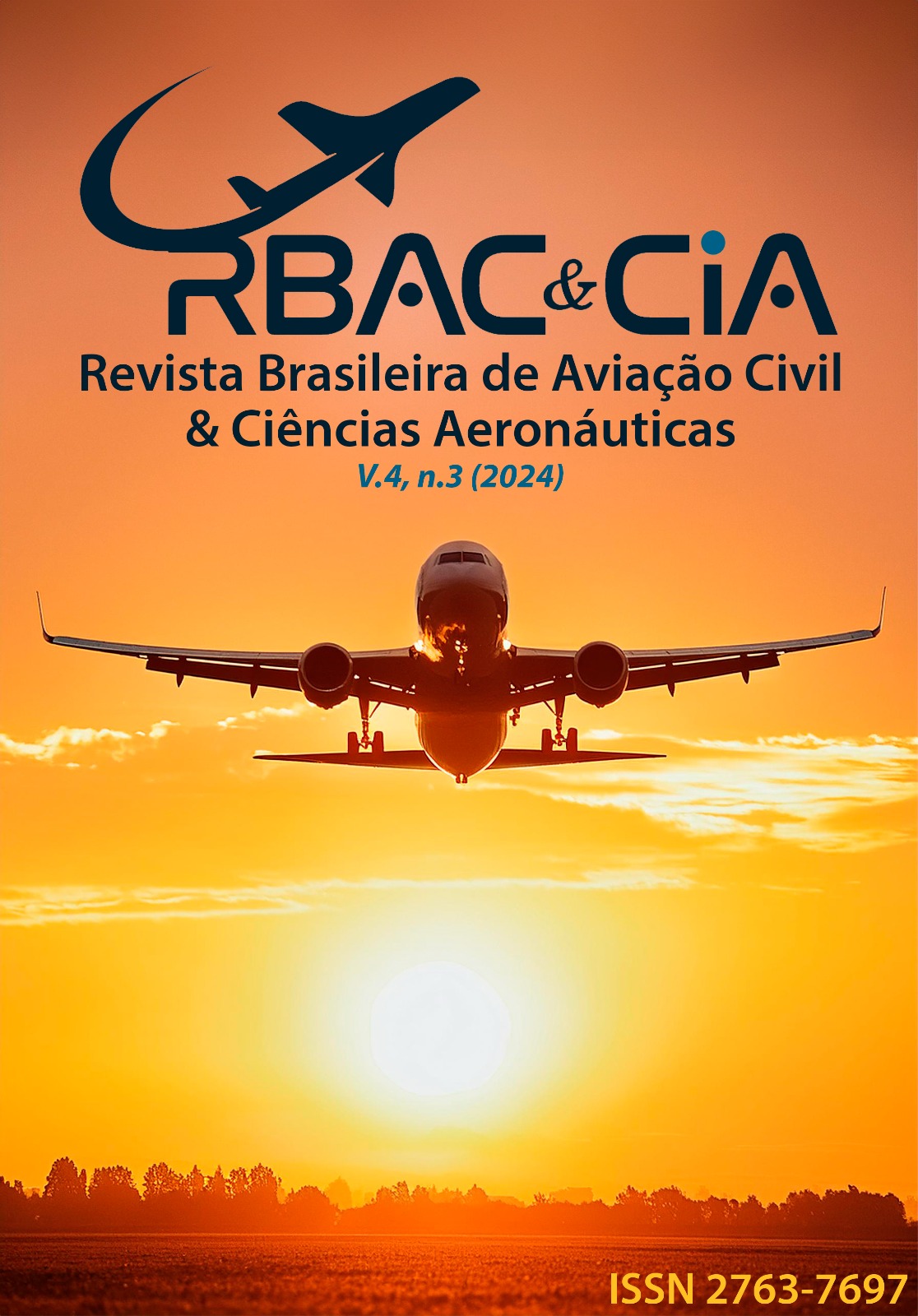CONCEITO E BENEFÍCIOS DE ASAS TRANSFORMÁVEIS (MORPHING) EM AVIÕES CONCEPT AND BENEFITS OF MORPHING WINGS IN AIRPLANES
Conteúdo do artigo principal
Resumo
As asas da aeronave são um compromisso que permite à aeronave voar em diversas condições de voo, mas o desempenho em cada condição é abaixo do ideal. A capacidade da superfície de uma asa de alterar sua geometria durante o voo tem interessado pesquisadores e projetistas ao longo dos anos, pois reduz os compromissos de projeto necessários. Morphing é a forma abreviada de metamorfose; entretanto, não existe uma definição exata nem um acordo entre os pesquisadores sobre o tipo ou a extensão das mudanças geométricas necessárias para qualificar uma aeronave para o título de 'metamorfose de forma'. Os parâmetros geométricos que podem ser afetados pelas soluções de morphing podem ser categorizados em: alteração da forma do plano (envergadura, varredura e corda), transformação fora do plano (torção, diedro e flexão no sentido da envergadura) e ajuste do aerofólio (curvatura e espessura). Alterar a forma ou geometria da asa não é novidade. Historicamente, as soluções de transformação sempre levaram a penalidades em termos de custo, complexidade ou peso, embora, em certas circunstâncias, estas tenham sido superadas por benefícios no nível do sistema. A tendência atual para aeronaves altamente eficientes e “verdes” torna tais compromissos menos aceitáveis, exigindo projetos de morphing inovadores capazes de proporcionar mais benefícios e menos desvantagens. Desenvolvimentos recentes em materiais “inteligentes” podem superar as limitações e aumentar os benefícios das soluções de design existentes. O desafio é projetar uma estrutura que seja capaz de suportar as cargas prescritas, mas que também seja capaz de alterar a sua forma: idealmente, não deveria haver distinção entre a estrutura e o sistema de atuação. A combinação de estruturas morphing e inteligentes numa abordagem integrada requer um pensamento multidisciplinar desde o desenvolvimento inicial, o que aumenta significativamente a complexidade geral, mesmo na fase preliminar do projeto. Morphing é uma tecnologia promissora para as futuras aeronaves da próxima geração. No entanto, os fabricantes e os utilizadores finais ainda estão demasiado céticos quanto aos benefícios para adotarem a transformação num futuro próximo, mas é apenas uma questão de tempo até vermos asas de aeronaves que exibem capacidades de transformação que hoje parecem impossíveis.
ABSTRACT
Aircraft wings are a compromise that allows the aircraft to fly at a range of flight conditions, but the performance at each condition is sub-optimal. The ability of a wing surface to change its geometry during flight has interested researchers and designers over the years as this reduces the design compromises required. Morphing is the short form for metamorphose; however, there is neither an exact definition nor an agreement between the researchers about the type or the extent of the geometrical changes necessary to qualify an aircraft for the title ‘shape morphing.’ Geometrical parameters that can be affected by morphing solutions can be categorized into: planform alteration (span, sweep, and chord), out-of-plane transformation (twist, dihedral/gull, and span-wise bending), and airfoil adjustment (camber and thickness). Changing the wing shape or geometry is not new. Historically, morphing solutions always led to penalties in terms of cost, complexity, or weight, although in certain circumstances, these were overcome by system-level benefits. The current trend for highly efficient and ‘green’ aircraft makes such compromises less acceptable, calling for innovative morphing designs able to provide more benefits and fewer drawbacks. Recent developments in ‘smart’ materials may overcome the limitations and enhance the benefits from existing design solutions. The challenge is to design a structure that is capable of withstanding the prescribed loads but is also able to change its shape: ideally, there should be no distinction between the structure and the actuation system. The blending of morphing and smart structures in an integrated approach requires multi-disciplinary thinking from the early development, which significantly increases the overall complexity, even at the preliminary design stage. Morphing is a promising enabling technology for the future, next-generation aircraft. However, manufacturers and end users are still too skeptical of the benefits to adopt morphing in the near future, but it is just a question of time before we see aircraft wings that exhibit morphing capabilities that seem impossible today.
Downloads
Detalhes do artigo

Este trabalho está licenciado sob uma licença Creative Commons Attribution 4.0 International License.
